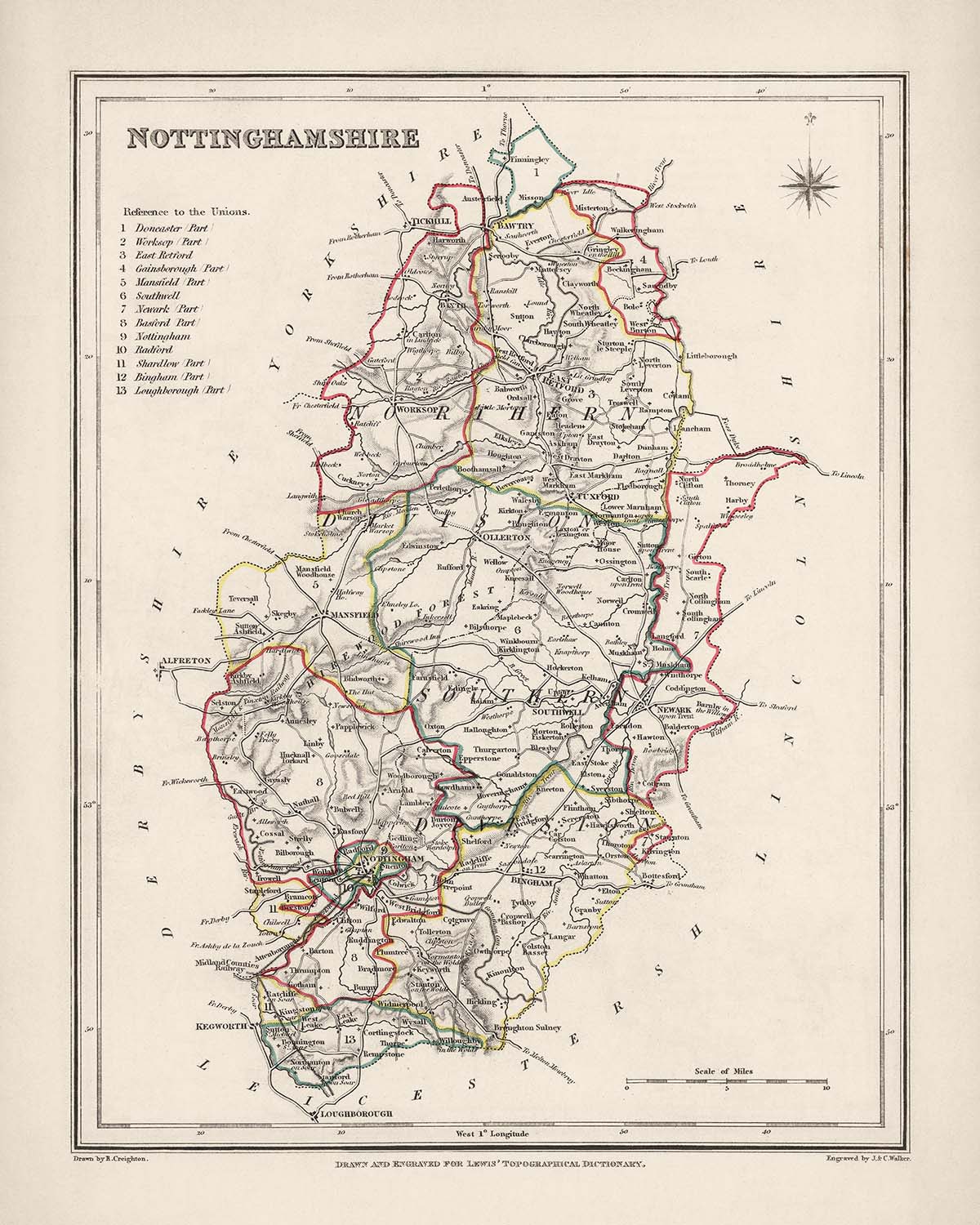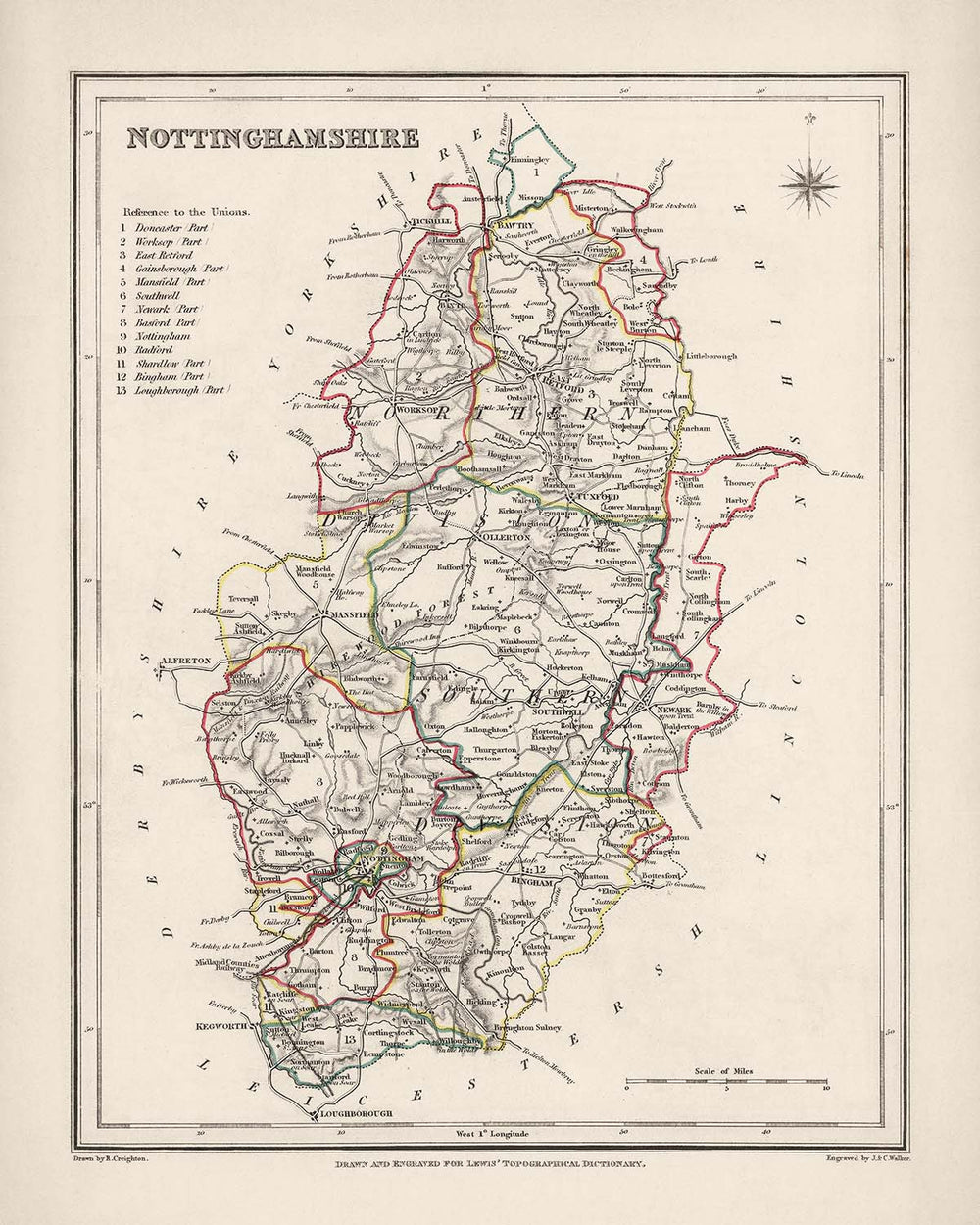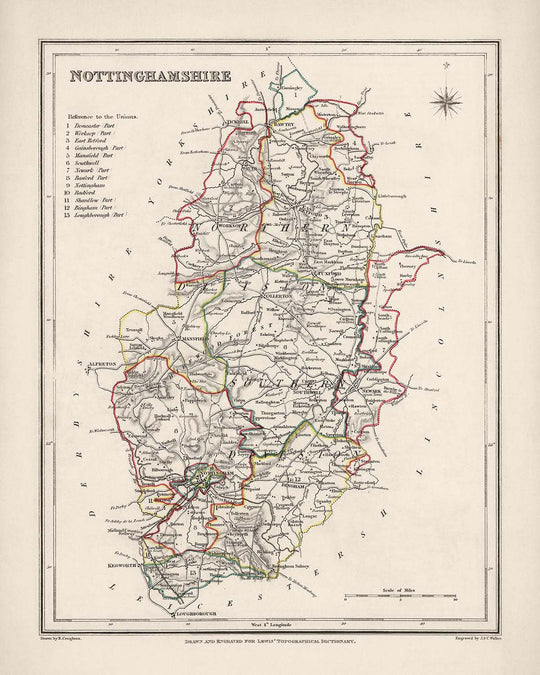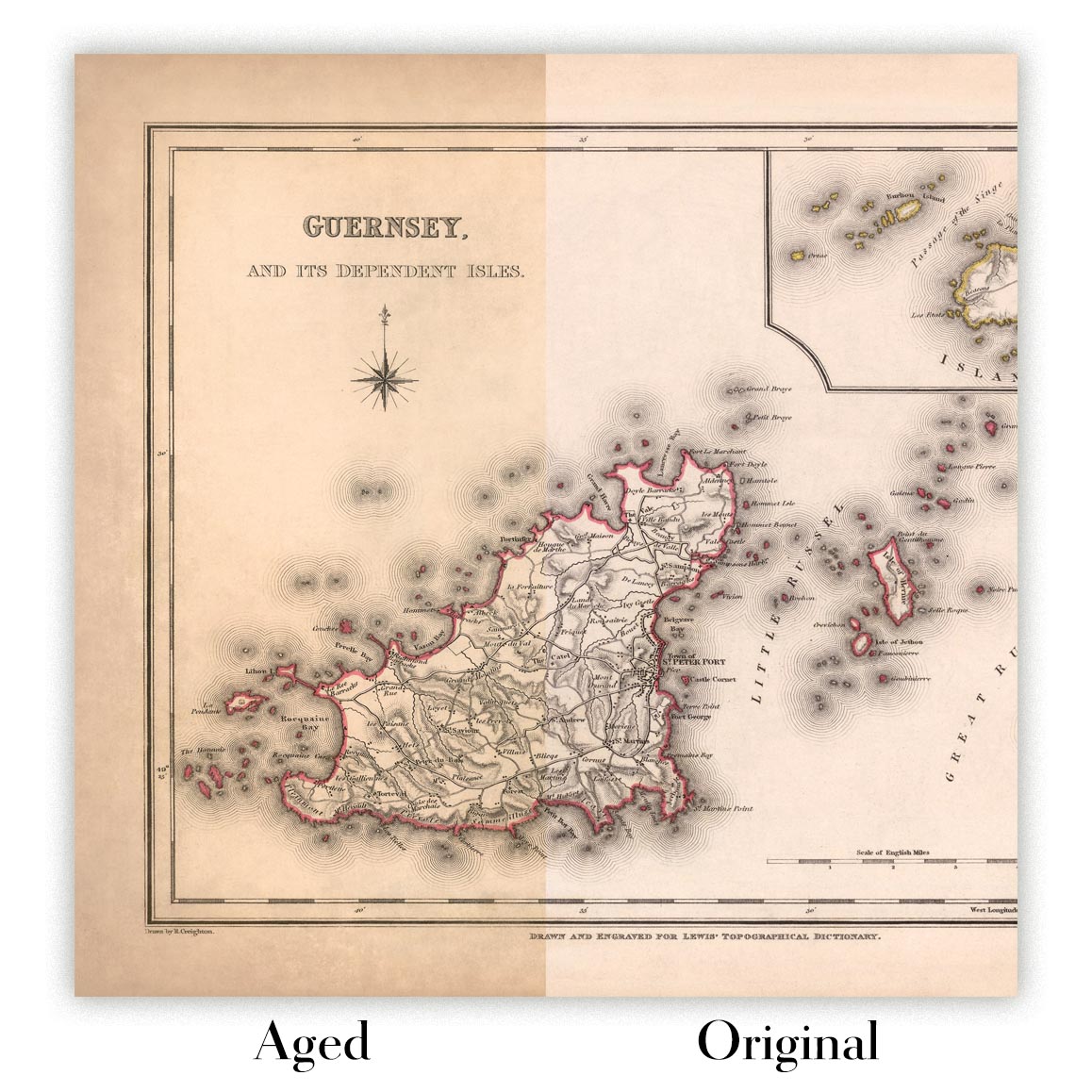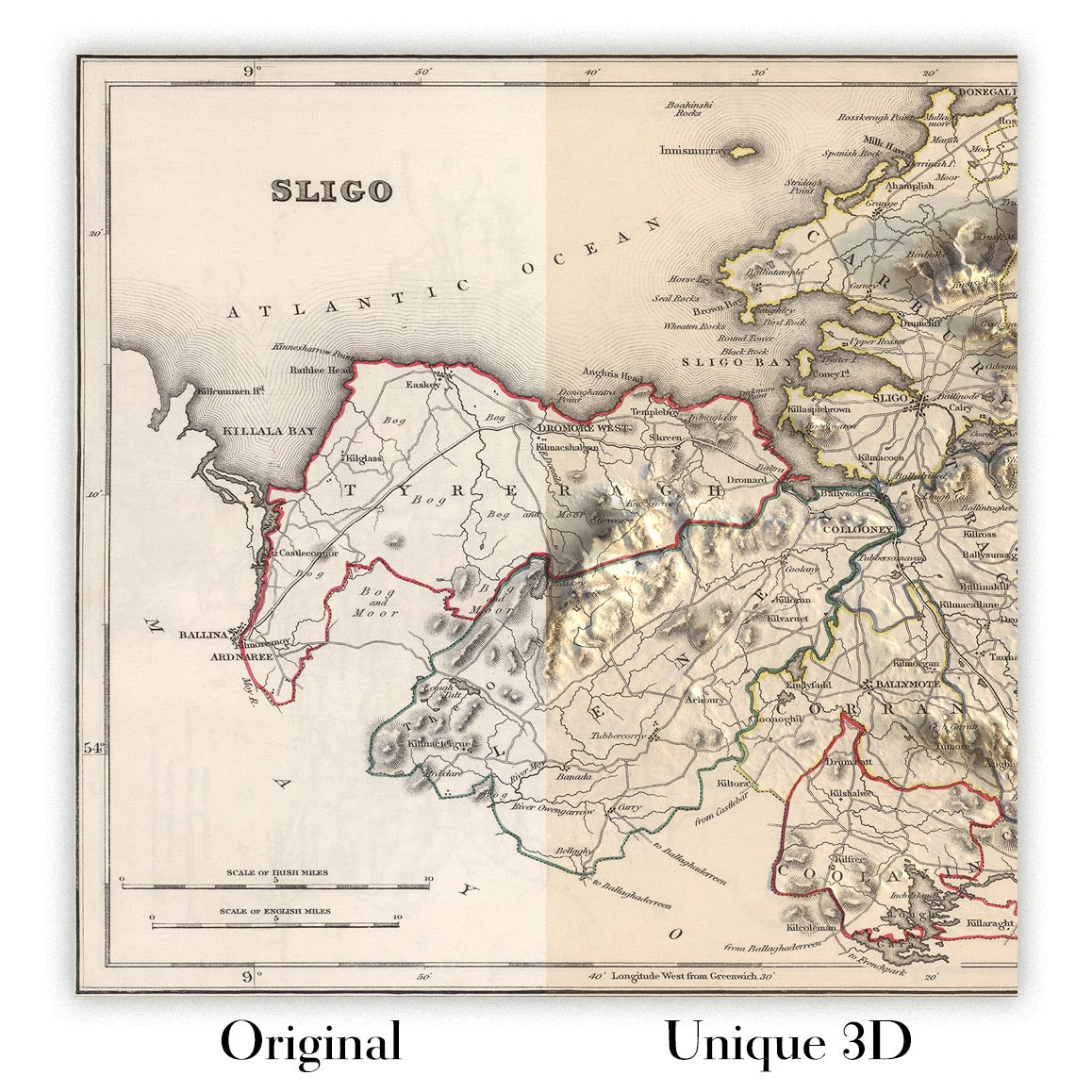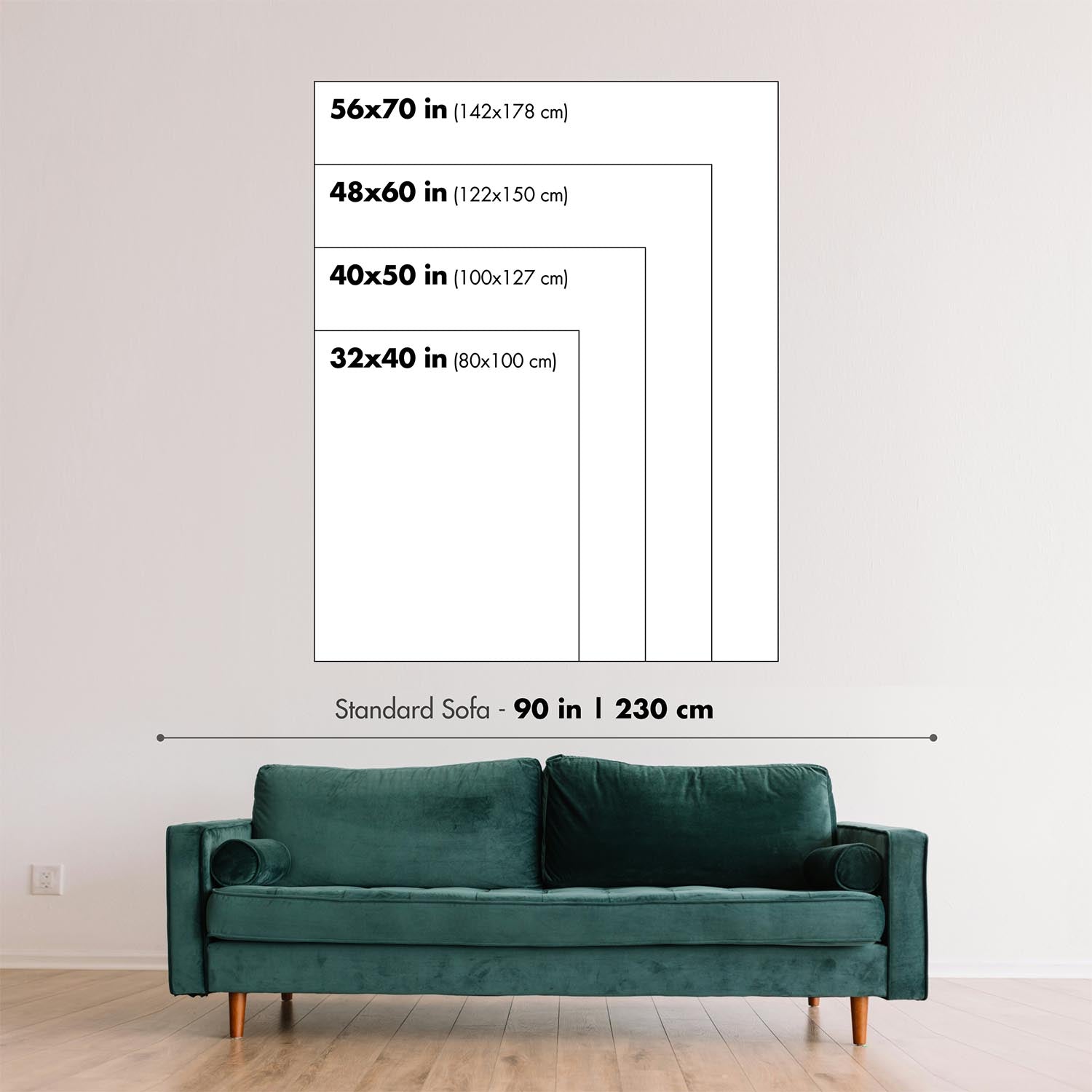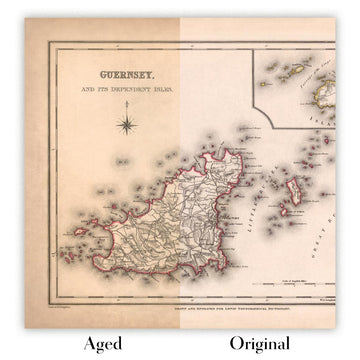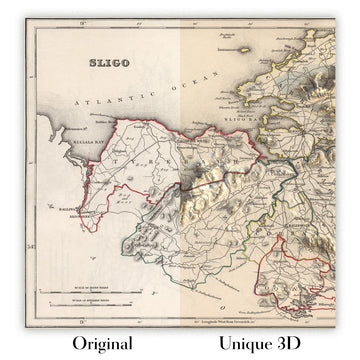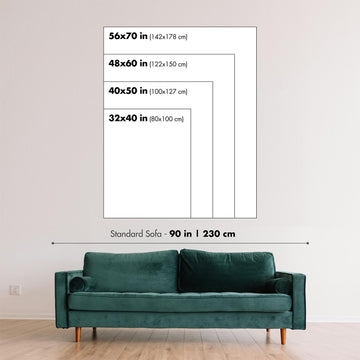- Handmade locally. No import duty or tax
- FREE Delivery by Christmas
- Love it or your money back (90 days)
- Questions? WhatsApp me any time
Own a piece of history
5,000+ 5 star reviews


The Old Map of Nottinghamshire by Samuel Lewis, dating back to 1844, is a captivating and historically significant piece that allows you to explore the County of Nottinghamshire in its bygone era. This meticulously crafted map showcases the five main towns, cities, and other intriguing features of the region, providing a glimpse into the past.
This map offers a unique perspective on Nottinghamshire, revealing its major towns and cities as they were in 1844. It's important to note that some modern cities may not be present on this map, while others may be listed under earlier names, adding an element of excitement and discovery to your exploration. With its detailed cartography and exquisite craftsmanship, this map is not only a valuable historical artifact but also a stunning piece of art that will enhance any space.
Not only does this map highlight the main towns and cities, but it also showcases the historical settlements and colonies that were founded before 1840 within the boundaries of Nottinghamshire. Here is a comprehensive list of 30 notable settlements, ordered by modern-day population size, each accompanied by a short description of their significance and the year they were founded:
- Nottingham (1067): The county town and a vibrant city with a rich history, known for its medieval castle and association with the legendary Robin Hood.
- Mansfield (1086): A market town known for its industrial heritage, particularly in coal mining and textiles.
- Worksop (1086): An ancient market town with a history dating back to Roman times, featuring the impressive Worksop Manor.
- Newark-on-Trent (920): A historic market town renowned for its well-preserved castle and its significance during the English Civil War.
Retford (1086): A charming market town known for its Georgian architecture and traditional markets.
Southwell (956): A picturesque town famous for its stunning Southwell Minster, a magnificent medieval cathedral.
- Eastwood (1170): Birthplace of the renowned author D.H. Lawrence, whose works explore the social and emotional impact of industrialization.
- Hucknall (1086): The final resting place of the famous poet Lord Byron, known for his romantic and revolutionary writings.
- West Bridgford (1086): A suburban town situated on the outskirts of Nottingham, offering a blend of modern amenities and natural beauty.
Beeston (1086): A thriving town with a rich industrial past, known for its lace-making heritage.
Arnold (1086): A vibrant suburban town with a bustling market and a long history dating back to the Roman era.
- Carlton (1086): A former mining village that has transformed into a residential area with a strong sense of community.
- Sutton-in-Ashfield (1086): A market town with a proud mining heritage, once home to numerous collieries.
- Stapleford (1086): A town with a long history of agriculture and lace-making, offering a glimpse into Nottinghamshire's industrial past.
Worksop Manor (1086): A magnificent manor house surrounded by beautiful gardens, showcasing the region's architectural heritage.
Bingham (1086): A charming market town known for its historic buildings, including the impressive Bingham Hall.
- East Retford (1086): A former borough town with a rich history, featuring notable Georgian and Victorian architecture.
- Kimberley (1086): A former coal mining town that played a significant role in the Industrial Revolution.
- Ollerton (1086): A town situated on the edge of Sherwood Forest, known for its scenic beauty and proximity to the Major Oak.
Radcliffe-on-Trent (1086): A picturesque village with a tranquil riverside setting, offering a peaceful retreat from city life.
Kirkby-in-Ashfield (1086): A town with a strong mining heritage, once home to numerous collieries and mining communities.
- Rainworth (1086): A village located near Sherwood Forest, offering access to the natural beauty of the surrounding area.
- East Leake (1086): A village with a rich agricultural history, surrounded by beautiful countryside and charming rural landscapes.
- Cotgrave (1086): A former mining village that has transformed into a thriving community with modern amenities.
Radford (1086): A suburb of Nottingham known for its vibrant cultural scene and diverse population.
Keyworth (1086): A village situated on the edge of the Vale of Belvoir, offering picturesque views and a close-knit community.
- Ruddington (1086): A village with a charming character, known for its historic buildings and traditional village events.
- Calverton (1086): A former mining village with a strong sense of community and a picturesque countryside setting.
- Harworth (1086): A former mining town that has undergone significant regeneration, now offering a mix of residential and industrial areas.
- East Markham (1086): A village steeped in history, featuring beautiful architecture and a tranquil rural setting.
In addition to these notable settlements, the Old Map of Nottinghamshire showcases the county's natural features and boundaries. While the map does not specifically mention modern-day tourist attractions, there are several notable rivers, including the River Trent and the River Idle, which flow through the region, providing scenic beauty and recreational opportunities.
Between 1800 and 1850, Nottinghamshire witnessed significant historical events. These include the rise of the textile industry, the expansion of coal mining, and the impact of the Industrial Revolution on the region's economy and society. The county played a role in the Luddite movement, which protested against the mechanization of textile production, and experienced social and political changes that shaped its history.
Owning the Old Map of Nottinghamshire by Samuel Lewis, 1844, allows you to delve into the past, explore the region's rich history, and appreciate the intricate details of this beautifully crafted map. It is a treasure for history enthusiasts, cartography aficionados, and anyone seeking a unique piece of Nottinghamshire's heritage.
Please double check the images to make sure that a specific town or place is shown on this map. You can also get in touch and ask us to check the map for you.
This map looks great at all sizes: 12x16in (30.5x41cm), 16x20in (40.5x51cm), 18x24in (45.5x61cm), 24x30in (61x76cm), 32x40in (81.5x102cm) and 40x50in (102x127cm), but it looks even better when printed large.
I can create beautiful, large prints of this map up to 50in (127cm). Please get in touch if you're looking for larger, customised or different framing options.
The model in the listing images is holding the 16x20in (40.5x51cm) version of this map.
The fifth listing image shows an example of my map personalisation service.
If you’re looking for something slightly different, check out my main collection of UK and Ireland maps.
Please contact me to check if a certain location, landmark or feature is shown on this map.
This would make a wonderful birthday, Christmas, Father's Day, work leaving, anniversary or housewarming gift for someone from the areas covered by this map.
This map is available as a giclée print on acid free archival matte paper, or you can buy it framed. The frame is a nice, simple black frame that suits most aesthetics. Please get in touch if you'd like a different frame colour or material. My frames are glazed with super-clear museum-grade acrylic (perspex/acrylite), which is significantly less reflective than glass, safer, and will always arrive in perfect condition.
This map is also available as a float framed canvas, sometimes known as a shadow gap framed canvas or canvas floater. The map is printed on artist's cotton canvas and then stretched over a handmade box frame. We then "float" the canvas inside a wooden frame, which is available in a range of colours (black, dark brown, oak, antique gold and white). This is a wonderful way to present a map without glazing in front. See some examples of float framed canvas maps and explore the differences between my different finishes.
For something truly unique, this map is also available in "Unique 3D", our trademarked process that dramatically transforms the map so that it has a wonderful sense of depth. We combine the original map with detailed topography and elevation data, so that mountains and the terrain really "pop". For more info and examples of 3D maps, check my Unique 3D page.
For most orders, delivery time is about 3 working days. Personalised and customised products take longer, as I have to do the personalisation and send it to you for approval, which usually takes 1 or 2 days.
Please note that very large framed orders usually take longer to make and deliver.
If you need your order to arrive by a certain date, please contact me before you order so that we can find the best way of making sure you get your order in time.
I print and frame maps and artwork in 23 countries around the world. This means your order will be made locally, which cuts down on delivery time and ensures that it won't be damaged during delivery. You'll never pay customs or import duty, and we'll put less CO2 into the air.
All of my maps and art prints are well packaged and sent in a rugged tube if unframed, or surrounded by foam if framed.
I try to send out all orders within 1 or 2 days of receiving your order, though some products (like face masks, mugs and tote bags) can take longer to make.
If you select Express Delivery at checkout your order we will prioritise your order and send it out by 1-day courier (Fedex, DHL, UPS, Parcelforce).
Next Day delivery is also available in some countries (US, UK, Singapore, UAE) but please try to order early in the day so that we can get it sent out on time.
My standard frame is a gallery style black ash hardwood frame. It is simple and quite modern looking. My standard frame is around 20mm (0.8in) wide.
I use super-clear acrylic (perspex/acrylite) for the frame glass. It's lighter and safer than glass - and it looks better, as the reflectivity is lower.
Six standard frame colours are available for free (black, dark brown, dark grey, oak, white and antique gold). Custom framing and mounting/matting is available if you're looking for something else.
Most maps, art and illustrations are also available as a framed canvas. We use matte (not shiny) cotton canvas, stretch it over a sustainably sourced box wood frame, and then 'float' the piece within a wood frame. The end result is quite beautiful, and there's no glazing to get in the way.
All frames are provided "ready to hang", with either a string or brackets on the back. Very large frames will have heavy duty hanging plates and/or a mounting baton. If you have any questions, please get in touch.
See some examples of my framed maps and framed canvas maps.
Alternatively, I can also supply old maps and artwork on canvas, foam board, cotton rag and other materials.
If you want to frame your map or artwork yourself, please read my size guide first.
My maps are extremely high quality reproductions of original maps.
I source original, rare maps from libraries, auction houses and private collections around the world, restore them at my London workshop, and then use specialist giclée inks and printers to create beautiful maps that look even better than the original.
My maps are printed on acid-free archival matte (not glossy) paper that feels very high quality and almost like card. In technical terms the paper weight/thickness is 10mil/200gsm. It's perfect for framing.
I print with Epson ultrachrome giclée UV fade resistant pigment inks - some of the best inks you can find.
I can also make maps on canvas, cotton rag and other exotic materials.
Learn more about The Unique Maps Co.
Map personalisation
If you're looking for the perfect anniversary or housewarming gift, I can personalise your map to make it truly unique. For example, I can add a short message, or highlight an important location, or add your family's coat of arms.
The options are almost infinite. Please see my map personalisation page for some wonderful examples of what's possible.
To order a personalised map, select "personalise your map" before adding it to your basket.
Get in touch if you're looking for more complex customisations and personalisations.
Map ageing
I have been asked hundreds of times over the years by customers if they could buy a map that looks even older.
Well, now you can, by selecting Aged before you add a map to your basket.
All the product photos you see on this page show the map in its Original form. This is what the map looks like today.
If you select Aged, I will age your map by hand, using a special and unique process developed through years of studying old maps, talking to researchers to understand the chemistry of aging paper, and of course... lots of practice!
If you're unsure, stick to the Original colour of the map. If you want something a bit darker and older looking, go for Aged.
If you are not happy with your order for any reason, contact me and I'll get it fixed ASAP, free of charge. Please see my returns and refund policy for more information.
I am very confident you will like your restored map or art print. I have been doing this since 1984. I'm a 5-star Etsy seller. I have sold tens of thousands of maps and art prints and have over 5,000 real 5-star reviews. My work has been featured in interior design magazines, on the BBC, and on the walls of dozens of 5-star hotels.
I use a unique process to restore maps and artwork that is massively time consuming and labour intensive. Hunting down the original maps and illustrations can take months. I use state of the art and eye-wateringly expensive technology to scan and restore them. As a result, I guarantee my maps and art prints are a cut above the rest. I stand by my products and will always make sure you're 100% happy with what you receive.
Almost all of my maps and art prints look amazing at large sizes (200cm, 6.5ft+) and I can frame and deliver them to you as well, via special oversized courier. Contact me to discuss your specific needs.
Or try searching for something!







